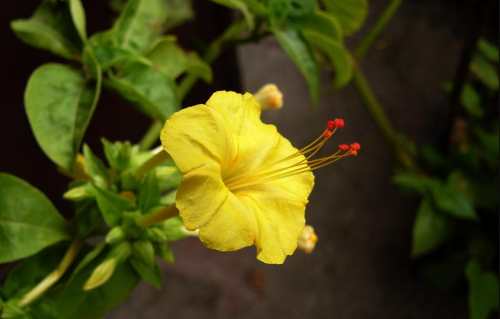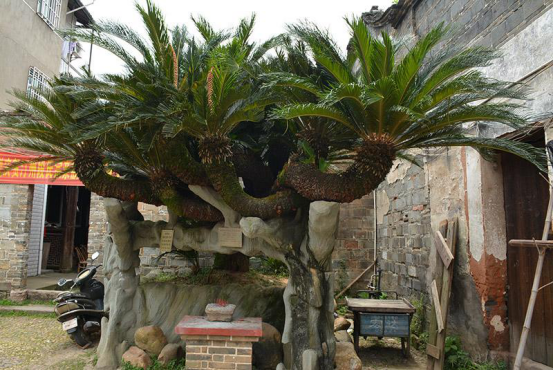Matters needing attention in breeding of Mai Xianweng
Upper basin
When putting on the pot, you need to put some broken tiles at the bottom of the flowerpot to facilitate drainage, put on a layer of rotten fertilizer, and finally put it into the soil.

Today's content is over. I hope this article can help friends who want to raise wheat fairy Weng, so that they can raise more and better wheat fairy Weng.
Breeding methods and matters needing attention of Mai Xianweng
Latin name Agrostemma githagoL
Don't call it wheat poison grass.
Binomial Agrostemma githago
The plant kingdom.
Phylum angiosperm
Dicotyledonous class
Subclass primitive perianth subclass
Central seed order of order
Family Caryophyllaceae
Subfamily Caryophyllaceae
Xieqiuluo clan
Belonging to the genus Mai Xianweng
Planting wheat Xianweng
Mai Xianweng, alias: wheat poison grass, Latin name: Agrostemma githago L. Caryophyllaceae, Mai Xianweng is an annual herb, 60-90 cm high, the whole plant is densely covered with white hirsute. Stem solitary, erect, unbranched or upper part branched. Leaf blade linear or linear-lanceolate, base slightly connate, clasping, tip acuminate, midrib obvious. Stamens slightly exserted, filaments glabrous; style exserted, covered with long hairs. Capsule ovate, slightly longer than persistent calyx, revolute; seeds irregularly ovate or reniform, black, spinose. The flowering period is from June to August and the fruiting period is from July to September. 1. Morphological characteristics.
Herbs annual, 60-90 cm tall, whole plant densely covered with white hirsute. Stem solitary, erect, unbranched or upper part branched. Leaf blade linear or linear-lanceolate, 4-13 cm long and 5-10 mm wide, base slightly connate, clasping, tip acuminate, midrib obvious. Flowers solitary, ca. 30 mm in diam., pedicel extremely long; calyx long elliptic-ovate, 12-15 mm long, later slightly inflated, calyx lobes linear, leaflike, 20-30 mm long; petals purplish red, shorter than calyx, claws narrowly cuneate, white, glabrous, limb Obovate, retuse; stamens slightly exserted, filaments glabrous; style exserted, long hairy. Capsule ovate, 12-18 mm long, slightly longer than persistent calyx, cleft teeth 5, revolute; seeds irregularly ovate or reniform, 2.5-3 mm long, black, spinose. 2n=48 . The flowering period is from June to August and the fruiting period is from July to September.
2. Growth habits
Born in wheat field or roadside grass, it is a weed in the field. Summer flowering, its adaptability is very strong, self-sowing reproduction, exuberant growth.
3. Geographical distribution
Produced in Heilongjiang, Jilin, Inner Mongolia, *. Europe, Asia,
It is also found in northern Africa and North America.
4. Taxonomy
Mai Xianweng, alias: wheat poison grass, Latin name: Agrostemma githagoL. Angiosperm phylum; dicotyledonous class; central seed order; Caryophyllaceae; Mai Xianweng; Mai Xianweng. 5. Subordinate species
Mai Xianweng (Atlas of Chinese plants). Wheat poisonous grass (northeast herbaceous flora) plate 64:1-4 Agrostemma githago L., Sp. Pl. four hundred and thirty five。 1753; Hook. , Fl. Bor. -Amer. 1: 92. 1840; Kom. In Act. Hort. Petrop. 22 (Fl. Mansh. 2): 191. 1903; Hegi, Illustr. Fl. MittelEurop. 3: 273. Taf. ninety-eight。 Fig. 3u. Fig. 564a-c. 1912; Pax et Hoffm. In Engler u. Prantl, Nat. Pflanzenfam. 2. Aufl. 16c: 339. 1934; Muravjeva in Kom. Fl. USSR 6: 575. 1936; I don't know if I know what to do. I don't know what to do. 3: 363. I don't know what to say. thirty-five。 I'm sorry, I'm sorry. 6. 1960; Tutin et al., Fl. Europ. 1: 157. 1964; Atlas of higher plants in China 1: 636. Figure 1272. 1972; northeast herbaceous flora 3: 41. Plate 16. Figure 1-3. 1975.
How to grow Mai Xianweng planting methods and matters needing attention
Mai Xianweng itself is a kind of rural weed, but with the deepening of people's understanding of the value of Mai Xianweng, Mai Xianweng has gradually become a kind of artificially planted plant, which can not only control the impact of Mai Xianweng on human and the natural environment, but also effectively play the efficacy and role of Mai Xianweng.
How to grow Mai Xianweng
1. Sowing time
Mai Xianweng can be sown all the year round, but sowing in February to May in spring or August to October in autumn can effectively increase the germination rate of seeds and make the plant grow more vigorously.
2. Select soil
Mai Xianweng's requirements on the soil are not strict, but its plants are relatively strong, and its roots are also very well developed, so it is best to choose loose and fertile soil for planting. In order to effectively avoid diseases and insect pests, it is best to dig the soil deeply before planting and disinfect the soil.
3. Keep the right temperature and enough light
The most suitable temperature for Mai Xianweng's growth is about 15 to 35 degrees, but it can also withstand severe cold. It needs sufficient light during its vigorous growth period, and it does not need to be shaded in hot summer. In short, Mai Xianweng does not need any special care in terms of temperature and light.
4. Watering and fertilization
Mai Xianweng is more resistant to drought, but it still needs to be watered frequently during its growth, it is best to keep the soil moist, and it is necessary to increase the number of watering during flowering, but in order to avoid root rot and other problems, it is best not to water too much at one time; with regard to fertilization, it needs to be added almost every 10 to 15 days, so as to ensure the quantity and quality of flowers.
Breeding methods and matters needing attention of Mai Xianweng
1. Selection of basin soil
The nature of Mai Xianweng is relatively strong, it can tolerate barren, and its root system is relatively well developed. when potted, you can choose a clay basin of suitable size. The soil in the flowerpot can choose a mixture of rotten leaf soil, garden soil and mountain soil, and sprinkle with some dry and miscellaneous fertilizer. This kind of soil is loose, fertile and breathable, which is suitable for the growth of Mai Xianweng.
2. Light and temperature
Mai Xianweng management is relatively extensive, it likes direct sunlight, the suitable temperature for growth is between 15 ℃-35 ℃, can be cold-resistant. In the vigorous growth period of Mai Xianweng, it is necessary to give sufficient light, the general family farming, the sunny balcony can meet the lighting needs of Mai Xianweng. In terms of temperature, Mai Xianweng needs to be kept indoors for the winter. The temperature should be kept at about 10 ℃, but not too high.
3. Watering and fertilizing
During the breeding period of Mai Xianweng, it needs reasonable watering and fertilization. Mai Xianweng can withstand drought, but it is necessary to keep the basin soil moist during the growth period and follow the watering principle of dry and wet. In the hot summer, more watering is needed to prevent the plant from wilting, and the amount of water should be increased appropriately when the bud is formed. Fertilization is the application of thin fertilizer, once every 10-15 days, before flowering and after flowering, it is necessary to apply phosphorus and potassium fertilizer.
4. Upper basin
When putting on the pot, you need to put some broken tiles at the bottom of the flowerpot to facilitate drainage, and then put a layer of rotten fertilizer into the soil.
5. Reproduction
The reproduction of Mai Xianweng uses seeds to sow seeds. Mai Xianweng has strong self-sowing ability, and it can also be sown in early spring.
Toxicity of Mai Xianweng
According to the records of Chinese plant atlas database, we can know that Mai Xianweng is a kind of poisonous plant, and its toxicity is mainly in seeds.
Because the growing soil is a good soil in the field, and the growth and maturity of Mai Xianweng is earlier than that of field plants, its toxicity is related to these aspects. The nuts and embryos in the seeds are the most toxic, but when heated, their toxicity weakens, so the toxicity is heat-resistant.
The Medicinal value of Mai Xianweng
The main efficacy is: relieving cough and asthma, warming menstruation and hemostasis, can be used for Xinjiu cough, pertussis, tuberculosis cough and other diseases, can also be used for women with metrorrhagia and menorrhagia.
The cultivation of Mai Xianweng needs to respect the growth habits of Mai Xianweng and provide a proper growth environment, so that Mai Xianweng can show its original appearance. In addition, the seeds of Mai Xianweng are oily to a certain degree of toxicity, so we must pay attention to them in the process of planting. In particular, Mai Xianweng is a kind of plant that mainly propagates by sowing.
- Prev

How to raise purple jasmine
Purple jasmine likes sunlight very much, so it is necessary to give the plant enough light to maintain its normal growth during the growing period, but in summer, the hot weather and violent sunlight make it impossible for the plant to be placed in the light, otherwise the leaves of the plant may be burned, so we have to give the plant shade.
- Next

The planting of iron tree
1, the soil chooses the iron tree likes the soil is rich, loose and the drainage good environment, therefore must not use the clayey soil when planting. It is recommended to use rotten leaf soil or sandy loam, culture soil and other soil. 2. The temperature requires that the iron tree likes the high temperature environment, but at the same time it also requires ventilation.
Related
- Fuxing push coffee new agricultural production and marketing class: lack of small-scale processing plants
- Jujube rice field leisure farm deep ploughing Yilan for five years to create a space for organic food and play
- Nongyu Farm-A trial of organic papaya for brave women with advanced technology
- Four points for attention in the prevention and control of diseases and insect pests of edible fungi
- How to add nutrient solution to Edible Fungi
- Is there any good way to control edible fungus mites?
- Open Inoculation Technology of Edible Fungi
- Is there any clever way to use fertilizer for edible fungus in winter?
- What agents are used to kill the pathogens of edible fungi in the mushroom shed?
- Rapid drying of Edible Fungi

